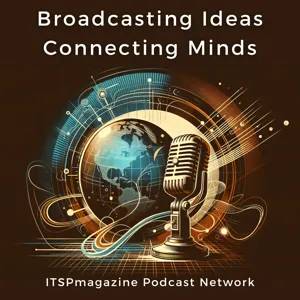Embrace the Goldmine of Your Unique Skills | A Conversation with Jo Peterson | The Soulful CXO Podcast with Dr. Rebecca Wynn

Guest: Jo Peterson, VP of Cloud and Security Services for Clarify360 [@Clarify360]
On LinkedIn | https://www.linkedin.com/in/jopeterson1
Host: Dr. Rebecca Wynn
On ITSPmagazine 👉 https://www.itspmagazine.com/itspmagazine-podcast-radio-hosts/rebecca-wynn
________________________________
This Episode’s Sponsors
Are you interested in sponsoring an ITSPmagazine Channel?
👉 https://www.itspmagazine.com/sponsor-the-itspmagazine-podcast-network
________________________________
Episode Description
In this episode of the Soulful CXO, Dr. Rebecca Wynn welcomes Jo Peterson, the VP of Cloud and Security Services for Clarify360. She shares her journey of becoming a female engineer and how her military experience helped her gain college credits. She talks about her early computer classes, handling imposter syndrome, being a female in technology, following your passion, and transitioning into the telco industry as a network engineer. We delve into the topic of AI's potential to deceive and manipulate recruitment systems, allowing candidates to appear more qualified than they truly are. Additionally, we discuss the incident response, the rapid growth of AI ransomware attacks, and how to better protect the business using incident response wrappers for funding recovery.
________________________________
Resources
Cloud Girls: https://cloudgirls.org/
Informing an Artificial Intelligence risk aware culture with the NIST AI Risk Management Framework: https://www.nist.gov/publications/informing-artificial-intelligence-risk-aware-culture-nist-ai-risk-management-framework
________________________________
Support:
Buy Me a Coffee: https://www.buymeacoffee.com/soulfulcxo
________________________________
For more podcast stories from The Soulful CXO Podcast With Rebecca Wynn: https://www.itspmagazine.com/the-soulful-cxo-podcast
ITSPMagazine YouTube Channel:
📺 https://www.youtube.com/@itspmagazine
Be sure to share and subscribe!














